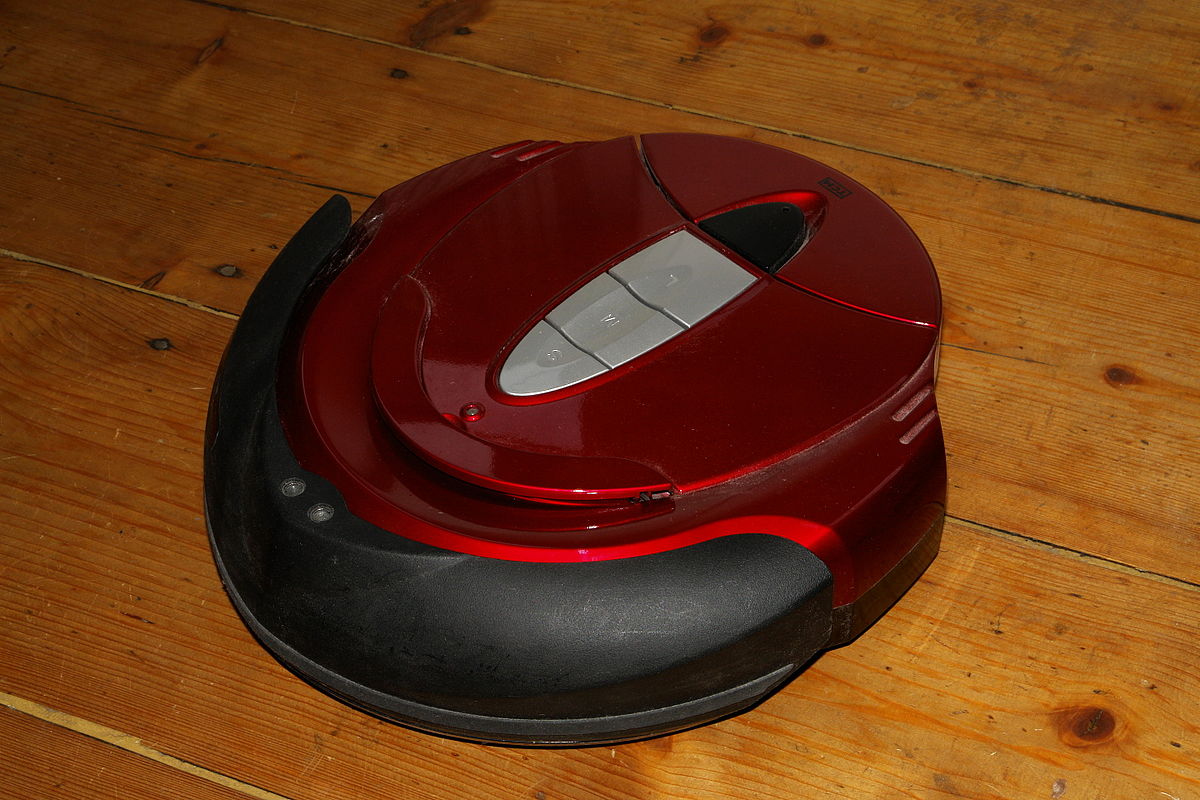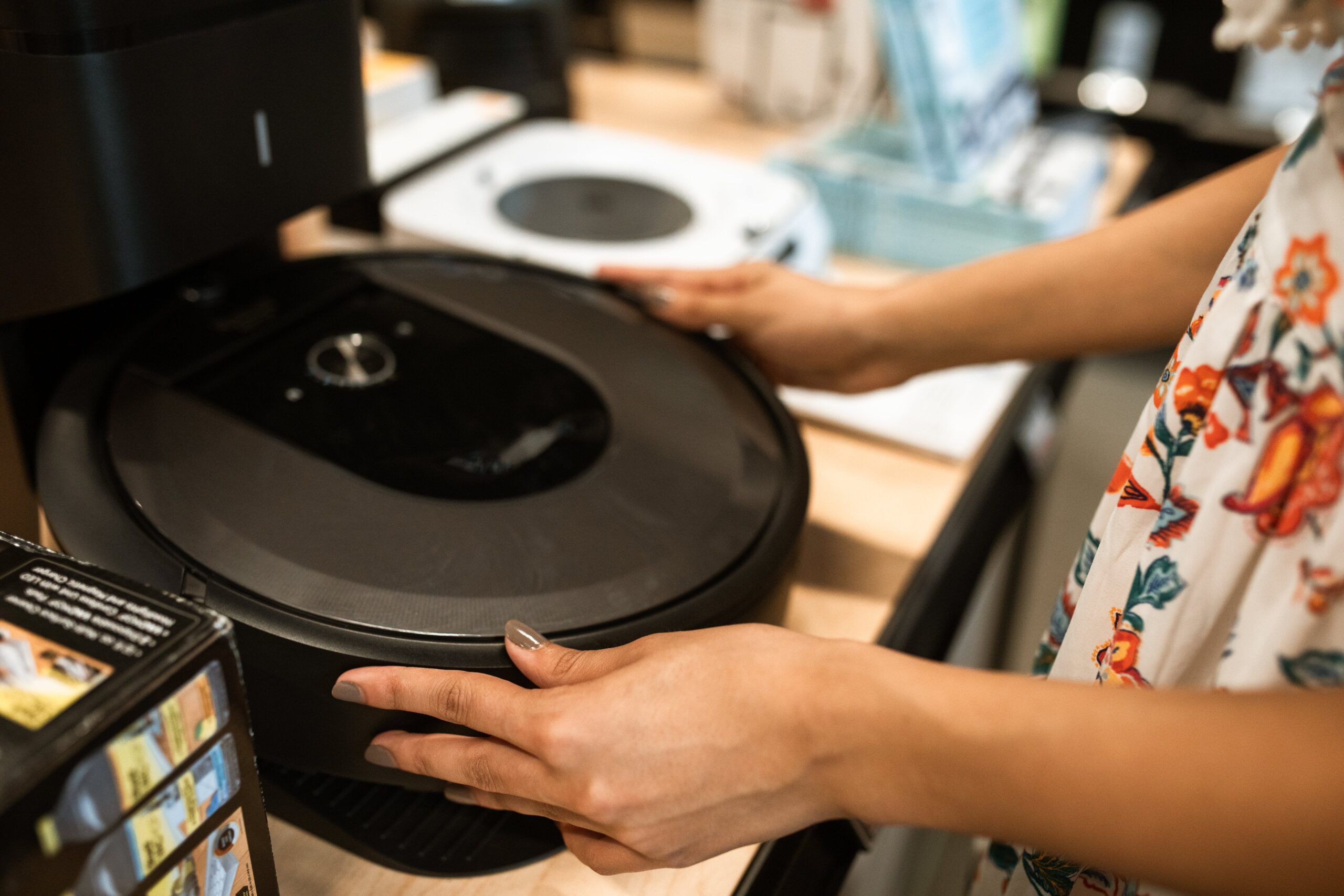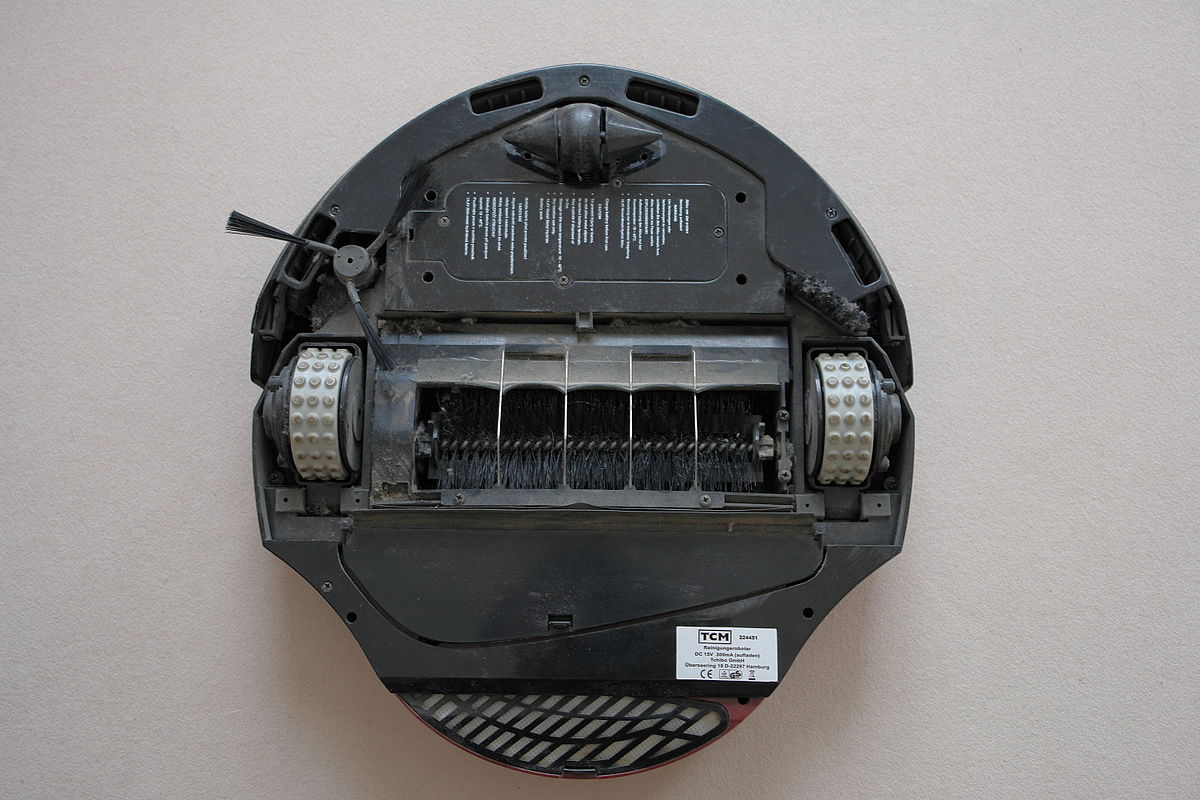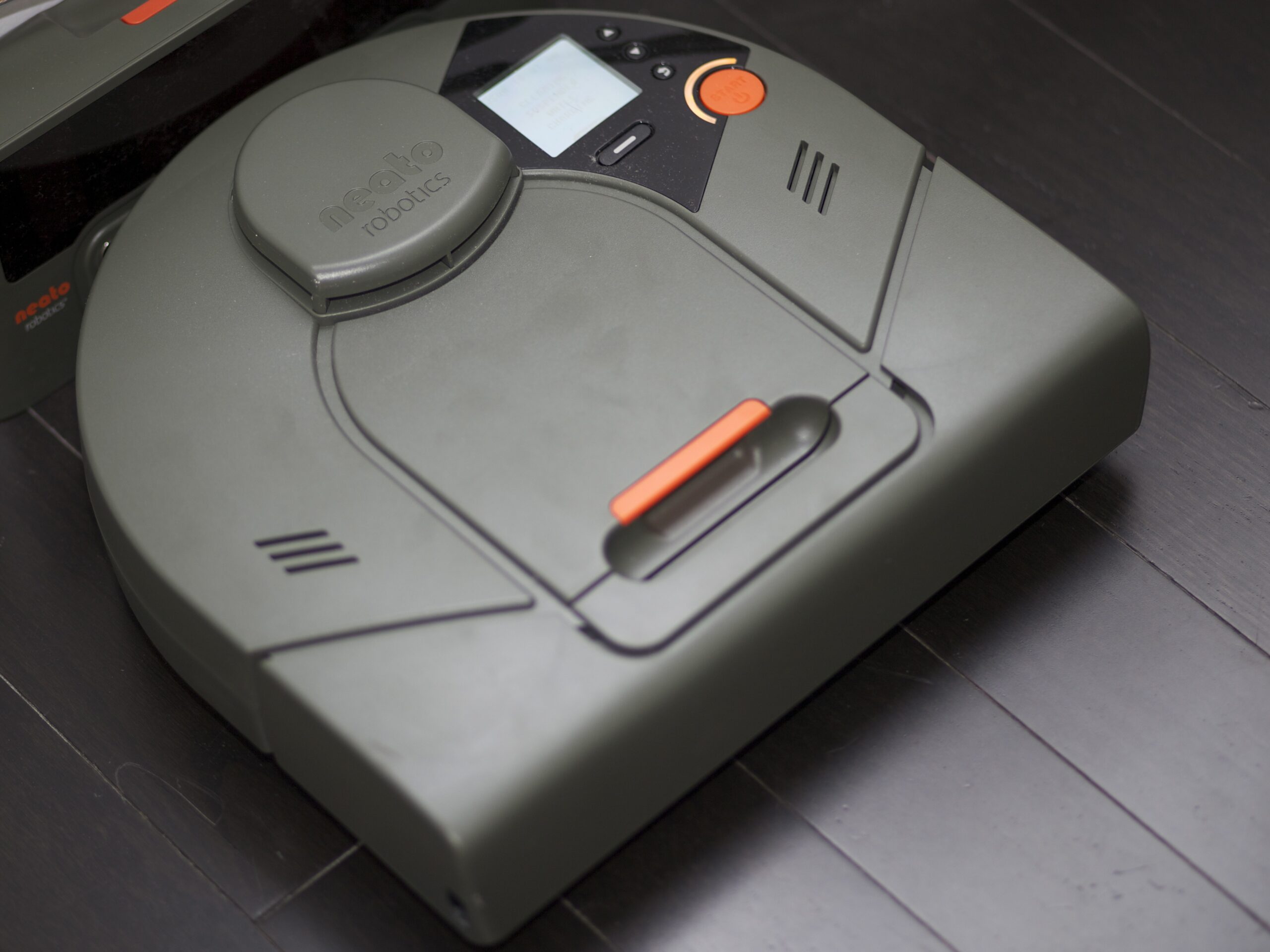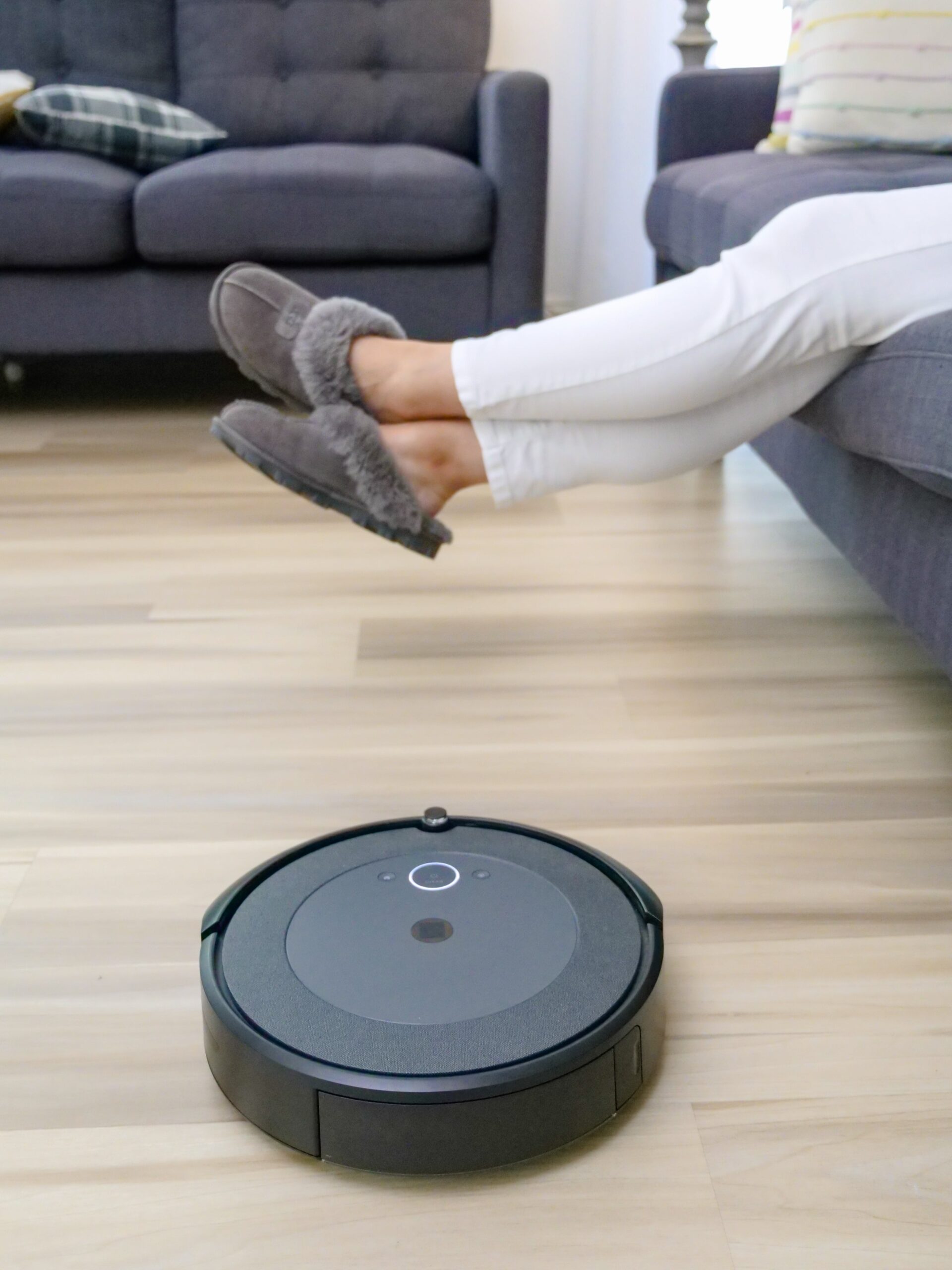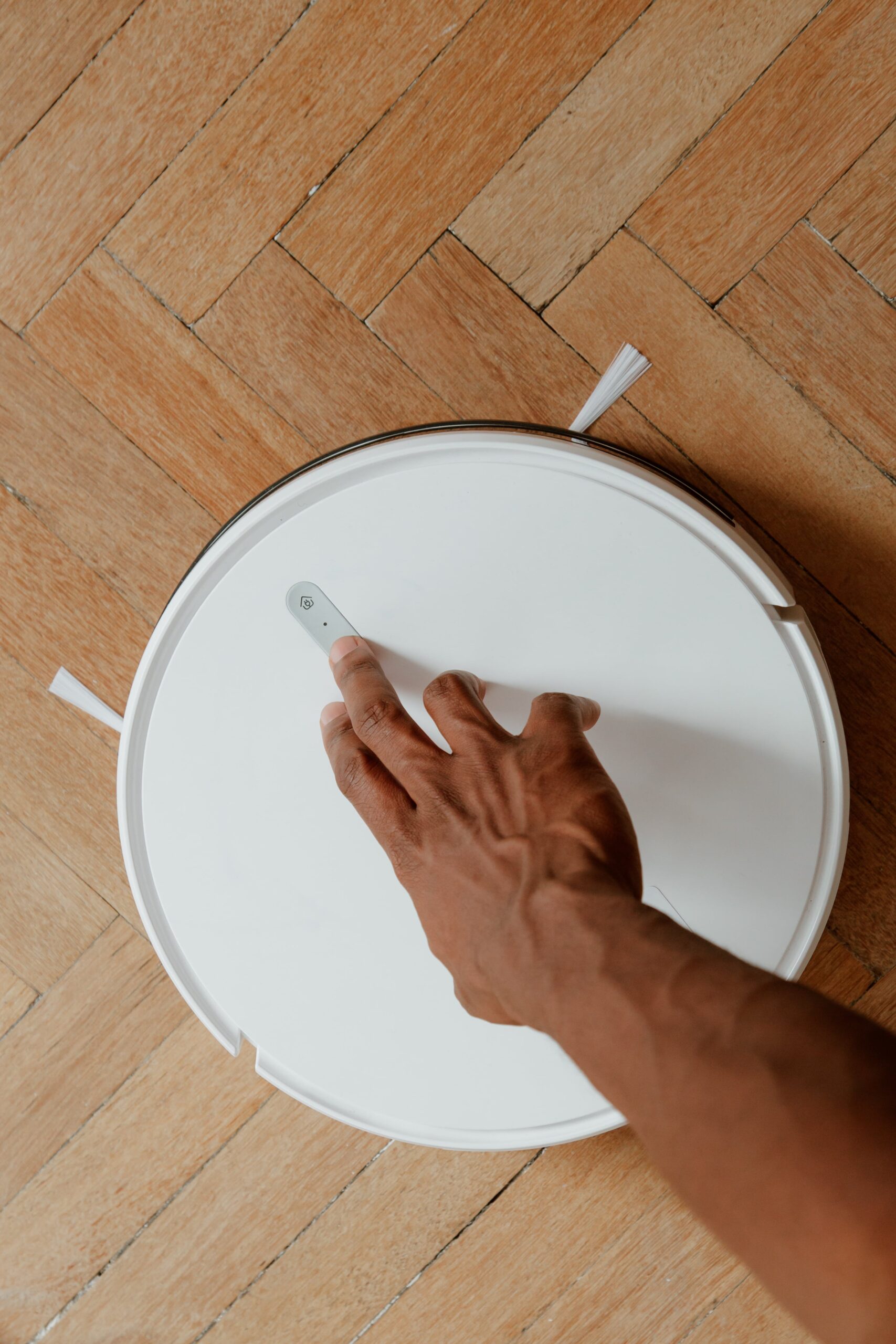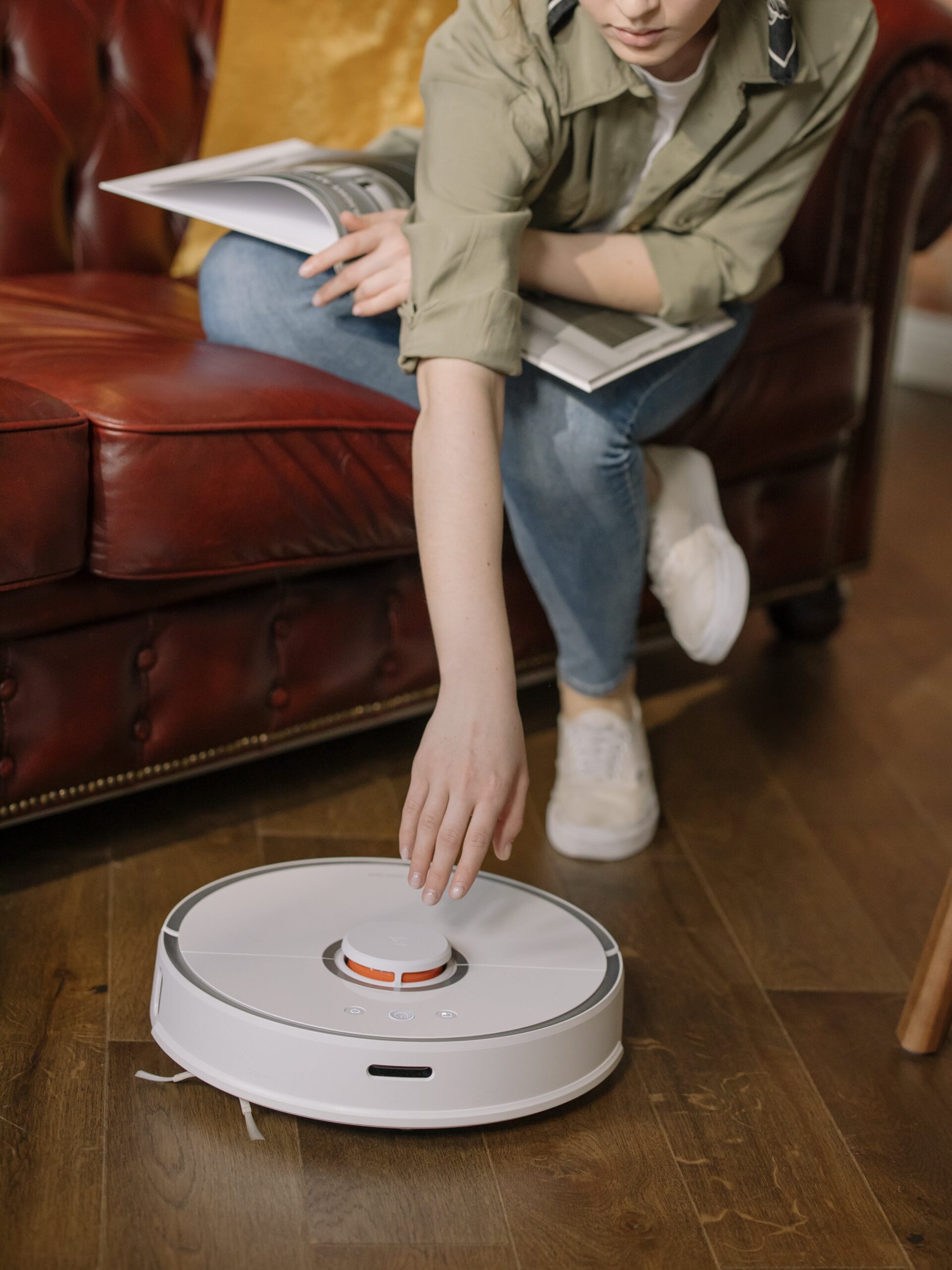Robotic vacuum cleaners are currently among the most widely used devices. They take care of all the labor-intensive tasks for you and are convenient and reasonably priced.
Conventional vacuum cleaners remove dirt from carpets and floors using a brush or suction. They require a continuous supply of electricity to operate, thus if they are not battery-operated, they must be switched on or plugged in while in use. They are also quite large and challenging to store. They are often manual tools that need to be moved or pushed by hand to clean the floor.
An automatic vacuum cleaner that employs sensors, motors, and algorithms to explore its surroundings and clean the floor is called a vacuum cleaner robot. Certain robotic vacuums are made to clean with no hands required, and they may be programmed to clean a certain area on a predetermined schedule or at a given time. Because robotic vacuums are more effective at cleaning than ordinary vacuums, they are fast becoming a popular household appliance.
Benefits of Using a Vacuum Cleaner Robot
Convenience
Without requiring your input, a robot vacuum cleaner with a mopping feature may autonomously vacuum and mop the floor. It offers a hands-free encounter. All you have to do is give the robot a cleaning schedule and walk away.
Saves time
The time a vacuum cleaner robot saves you is one of its biggest advantages. Vacuuming your home traditionally takes a lot of time, especially if you have a large living area or several rooms. You may program a robotic vacuum cleaner to clean while you’re at work or even when you’re not home. Your time may now be allocated to more significant tasks.
User-friendly
Robotic vacuum cleaners are engineered to be intuitive and simple to use. Using its easy-to-use interface, you may use an app to operate the gadget using buttons or a remote control.
Improved air quality
Robotic vacuums clean your floors of dust, allergies, pet dander, and other particles to help you maintain improved indoor air quality. Those who have asthma or allergies may find this to be helpful.
Regular cleaning
Robotic vacuums are made to go around your house and methodically clean every square inch. To ensure complete cleaning and avoid impediments, they employ clever algorithms and sensors. Manual vacuuming often makes it harder to reach this uniformity.
Accessibility
Robotic vacuums can go under mattresses, furniture, and other difficult-to-reach places where conventional vacuum cleaners can struggle. This guarantees that every area of your floor, even the smallest ones, gets cleaned.
Customization
Numerous robotic vacuums include programmable cleaning settings. To meet your unique cleaning requirements, you may change the cleaning mode, timetable, and intensity. Certain versions are equipped with multiple cleaning brushes and settings tailored to suit various kinds of flooring.
Low noise levels
Because they are often quieter than conventional vacuums, robotic vacuums cause less disruption in your everyday routine. With minimal disruption, you may operate them while working, watching TV, or even sleeping.
Power-efficient
As opposed to conventional vacuum cleaners, the majority of robotic vacuums are made with energy efficiency and power economy in mind. Rechargeable batteries are frequently used in them, and when they run short on power, they return to their charging dock to be prepared for the next cleaning session.
Multi-surface cleaning
Numerous robotic vacuums are capable of smoothly switching between various flooring kinds, including carpet, tile, hardwood, and rugs. To suit the surface they are cleaning, they automatically modify their cleaning force.
Smart features
Advanced features like virtual limits, obstacle recognition, and mapping technologies are common in modern robotic vacuums. These characteristics lessen the chance of them becoming trapped or breaking furniture while also increasing cleaning effectiveness.
Price-efficient
While the initial cost of a robotic vacuum may be higher than a traditional vacuum cleaner, the long-term cost savings can be significant. You avoid having to constantly buy vacuum bags or filters, saving you time and effort.
It is easy to maintain
Generally speaking, keeping a robotic vacuum is simpler than maintaining a conventional vacuum cleaner. Although routine brush and filter cleaning and dustbin emptying are necessary, they are often less labor-intensive than traditional vacuum maintenance.
How to Set Up and Use a Robot Vacuum Cleaner
Open and examine
After carefully opening the package, check the robot vacuum for any obvious damage or missing parts. Verify that all of the required parts and accessories are there.
Charging the robot
The charging dock should be positioned such that the robot can readily access it. Connect the charging dock to a power source.
Before using the robot vacuum for the first time, make sure its battery is completely charged by leaving it on the charging station for a few hours or as advised by the user manual.
The right kind of floor setup
To keep the robot from becoming trapped or breaking something, clean up any tiny items, wires, and other possible obstructions from the floor before utilizing the robot vacuum.
Turn the robot on
A power button is typically found on robot vacuums. To activate the robot, press this button. Certain models could need you to use a smartphone app or onboard controls to adjust the language or time. See the user handbook for more instructions.
Setting up the Cleaning Schedule
This allows you to choose a cleaning schedule. You can select once a week or many times a week. Your robot vacuum cleaner has to be scheduled, so it’s ideal to follow your demands and configure it that way.
Begin the cleaning process
Typically, there are two approaches to begin a cleaning session: Hit the “Clean” button located on the robot vacuum. To start a cleaning cycle, use the smartphone app or voice command (if compatible).
Keep an eye on and oversee
It is a good idea to watch the robot vacuum throughout its initial cleaning cycles to make sure it navigates your space efficiently and doesn’t run into any unforeseen problems. Even if the majority of contemporary robot vacuums include sensors that allow them to recognize and avoid obstructions, it is still a good idea to exercise caution at first.
Monitor and maintain
Check for dirt regularly in the brushes, filters, and bins. Depending on how much dust and grime your house has, you may need to clean the brushes and filters after every cleaning session. Empty the trash can and do this before continuing.
If the robot vacuum you have utilized disposable bags or filters, make sure you replace them as recommended by the manufacturer.
Troubleshooting and maintenance
For maintenance instructions and troubleshooting advice, see the user handbook that came with your robot vacuum. Cleaning the wheels and sensors as well as making sure every component is in excellent operating order are typical maintenance duties.
How do robot vacuums work?
Robotic vacuum cleaners function similarly to bigger vacuums when it comes to collecting and sucking up dust and debris from your carpets and hard floors. They do this by lifting and collecting the dirt with a revolving brush bar or set of brushes and then sucking it up into a dust container.
Before the dirt reaches the dust container, it is typically pushed through a filter. Some robot vacuums require manual emptying, but others automatically eject the contents of their dust cup into a larger dust bin located in a docking station, allowing them to clean repeatedly without requiring your assistance.
Since most robot vacuum cleaners are circular, many tiny brushes extend over the vacuum’s perimeter to capture any dust and debris that may have fallen against baseboards and the boundaries of a room.
More costly robot vacuums measure the size and form of a room using infrared lasers, while less expensive ones utilize physical boundary strips that you have to put on the floor to make sure the robots only clean that area.
The robot vacuum will then use one of the two methods to go around the room, generally following a logical path to clean every square inch of your hard flooring or carpet.
To prevent becoming trapped between carpet and hard floors, the robot vacuum also uses sensors when moving between different types of flooring.
If you want to make sure that cleaning is done on time, schedules may be set for when it should happen. Alternatively, you can use an app or even a remote control to start cleaning whenever you need to.
How to Choose the Right Vacuum Cleaner Robot for Your Needs
There are a few factors to take into account before acquiring a vacuum cleaner robot, A few things you should be aware of are listed below.
Budget
You must take your budget into account when choosing a robot vacuum cleaner. Robotics prices are determined by features, quality, and varying degrees of intelligence.
Size of room/Floor plan
To get the most out of your robot, you must determine the amount of time it needs to operate, which may vary depending on the size of your home and the frequency of your cleanings.
Noise level
Different robotic vacuum cleaners have different noise levels. The noise level is something you should consider if you want your robot to operate in silence.
Cleaning performance
By comparing the robotic vacuum cleaners’ suction and mopping capacities, you may evaluate how well they clean.
What is Robot Vacuum Mapping?
During the first cleaning, robot vacuums map your house using a technique called robot vacuum mapping. Most high-end versions can clean both hard surfaces and carpets, and mapping helps the robot grasp how the house looks, making it simpler to clean every area. Mapping enables it to avoid the areas that it has already cleaned, even in textures that appear identical.
Larger households will find it very useful to use the map storing feature in a smartphone app to store this map. If you prefer zone cleaning, you can also use the app to select the areas you want the robot to clean.
When the robot vacuum is cleaned for the first time after purchase, remain at home and keep an eye on it. It has to learn the routes because it doesn’t comprehend your house.
Robot vacuums that follow the route will ultimately need to dock to recharge, but how do they locate their base? Infrared signals indicate the location of the base after cleaning or when the robot has run out of battery. Robot vacuum makes its way to the base. It keeps cleaning the house after it has recharged. There are several ways that a gadget may map out the home, even if the procedure can appear simple.
The Main Types of Mapping Technology
Vacuums map a house using a variety of methods, among which are the four primary mapping technologies covered in this section.
Camera-based mapping
Using a digital camera, this device maps the house by capturing pictures of its landmarks. Although this technology maps effectively, it is not night-vision compatible. However, some manufacturers are starting to equip some of the gadgets with a light source.
Lidar-based mapping
A rotating, invisible laser called a lidar is used to detect data. It begins by mapping the house, cleaning it methodically in straight lines rather than at random, and then gathers information on the dimensions of the space and impediments, such as legs, at the laser level. When it comes to mapping and navigation, Lidar technology outperforms the others.
Combined technologies
A few vacuum robots include up to three different mapping methods. To aid in the device’s effective navigation, these technologies are combined with sensors and the robot vacuum cleaner algorithm.
Sensors Help with Robot Vacuum Navigation
Robot vacuums employ sensors to assess road conditions while in motion and use mapping to create route cleaning. Let us examine the cliff sensors, obstacle sensors, and other technological components that make these gadgets function.
Cliff sensors
Cliff sensors are an absolute necessity for safety on any vacuum robot. Infrared light is used by cliff sensors; this light is reflected off things. Subsequently, the items transmit a signal back to the vacuum chamber receiver.
The receiver recognizes no item and modifies the route if the vac receives no signal. By doing this, you can stop your vacuum from toppling over the stairs.
Obstacle sensors
A vacuum may unavoidably encounter obstacles like furniture and other items that are on the floor when cleaning your house. Vacuums with obstructions on their bumpers will be guided through them using obstacle sensors.
The sensor will activate when the vacuum comes into touch with an item, causing it to veer away from it.
Wall sensors
These sensors clean along the borders after detecting walls using infrared light. The robot will accomplish this efficiently and without running into any barriers.
Wheel sensors
The wheel revolution is counted using light sensors to calculate the distance traveled. These sensors are only found in lower-end robot vacuum models, even though they were widely used in earlier generations.
Conclusion
To sum up, robot vacuums have completely changed the way we clean our homes; they are now more practical, effective, and easy to use, and as technology develops, they become even more powerful and intelligent.

